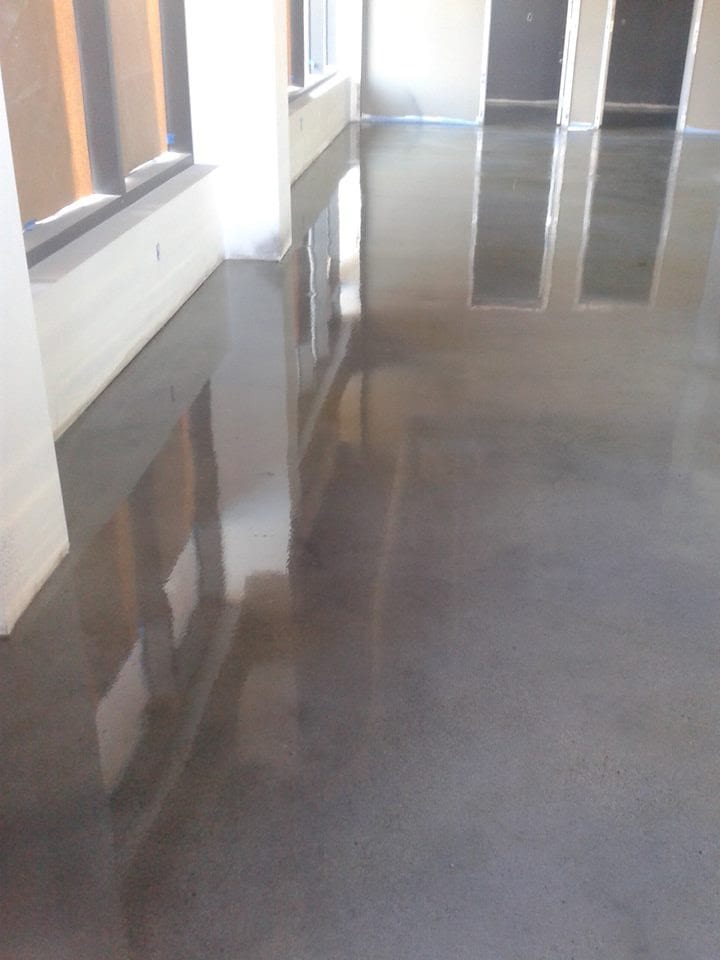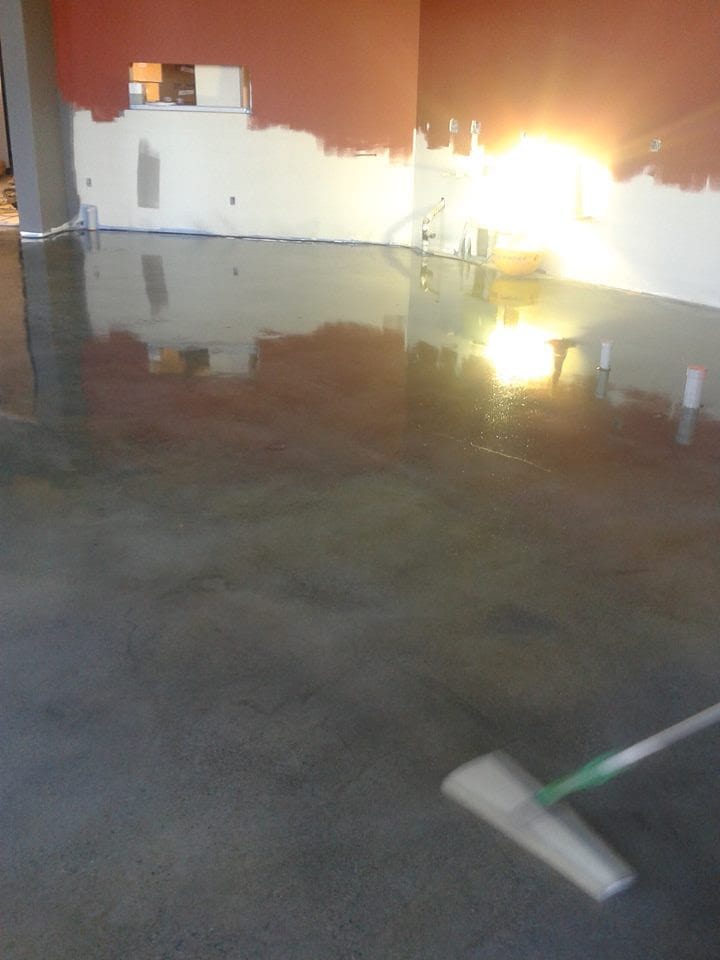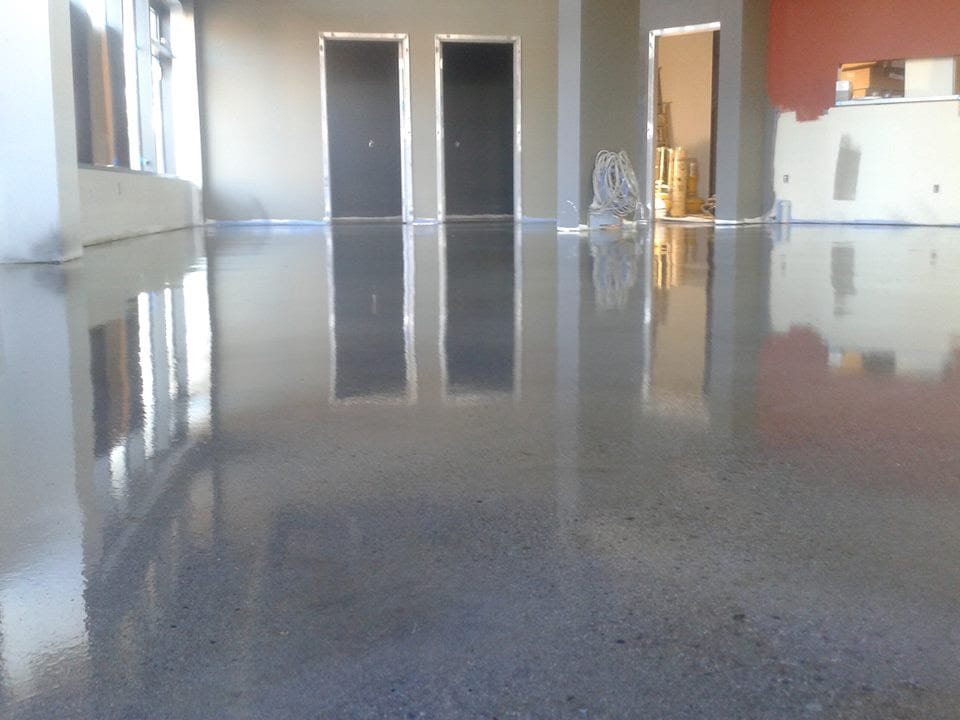Concrete is a porous material that readily absorbs liquids. A sealer can enhance and preserve concrete’s appearance by serving to delay or block, depending on the sealer chosen, the penetration of dirt, oil, grease, chemicals, and food stains. They should not be applied before new concrete has had at least 28 days to cure.
Sealing
Sealants provide a level of protection against wear and surface abrasion. The concrete colour is enriched and the shine enhanced whether the colour is integral, a stain or dye. Water-based acrylic sealers, Polyurethane coatings (generally applied as topcoat over epoxy), and Solvent-based acrylics all provide colour enhancement and a range of sheen from satin to high gloss. Many clients appreciate the light reflection, especially during the darker days of winter.
The longevity of sealers is an important consideration. Penetrating reactive chemical sealers will repel water and only wear away if the substrate surface itself wears away. This type of sealer has little effect on the traction and profile of concrete. Reactive penetrating sealers are weakened by acidic elements.
For resistance to acidic chemicals that can etch away at the surface of the concrete an impermeable epoxy or polyurethane coating may be in order. These coatings create a layer of protection that lasts about 5 to 10 years depending on traffic. These coatings can mildly affect the concrete profile. Epoxy and other coating options can provide industry specific solutions to regulatory requirements. Epoxies and polyurethanes require professional tools, and application.
Acrylic Sealers vs Polished Concrete
The process begins similarly to the polishing process. We use metal bonds to bring about the desired exposure. Once the exposure is achieved and the floor has been honed/refined, we use an acrylic sealer to fill the surface deviations and provide a shine. This process depends on the sealer to create the shine as opposed to the further mechanical process of polishing.
Pros
Economical
Quicker process
Applied to interior or exterior concrete
Cons
Less durable than polished concrete
Performance life – generally 1 to 3 years
More maintenance required




